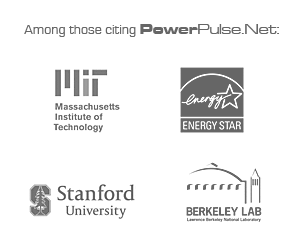DC Power Distribution Improves Efficiency of Power Hungry Data Centers

There seems to be no end to the growth and expansion of data centers, and with that growth comes a corresponding increase in power consumption. So much so, that global analytics company The 451 Group estimates that energy is 30% of the operating cost of a data center over a 15-year lifetime.
There seems to be no end to the growth and expansion of data centers, and with that growth comes a corresponding increase in power consumption. So much so, that global analytics company The 451 Group estimates that energy is 30% of the operating cost of a data center over a 15-year lifetime.
And that’s after a wave of server virtualization and other technology upgrades have been installed in order to reduce energy consumption. The Uptime Institute’s 2013 Data Center Report states that power usage effectiveness (PUE), the leading metric for data center power efficiency, has plateaued. The report concludes, “The biggest infrastructure efficiency gains happened five years ago.”
So how does today’s data center manager reduce energy consumption? With virtualization and low-power processor activities exhausted, many forward-looking data center operators are considering using DC-power distribution schemes instead of traditional AC power uninterruptible power supplies (UPS) and distribution.
DC power distribution is an untapped and significant source of power savings resulting from a reduction in wasteful power conversions. In a typical data center, AC power from mains enters the facility passing through an AC uninterruptible power supply (UPS), which converts it to DC to charge batteries, then inverts it back to AC to distribute to the equipment racks and other load. It is there that the power is converted to DC a second time. Each time conversion occurs there is a loss of energy.
With DC distribution, power is converted to DC at the mains, and then is distributed to each rack and to the battery back up were the only further conversion necessary is a DC-DC voltage reduction, which can be done using high-efficiency technology. The advantage is a dramatic reduction in conversion and inversion steps and thus less power wasted in the entire process.
How One Co-Location Center Switched to DC Power
One example of this data center DC distribution is a co-location data center in Asia whose owner wanted to reduce power consumption and decided to replace the AC infrastructure with an innovative, high availability 1 MW DC power system that will be phased in during 2014 and be totally deployed during 2015.
Critical to a decision to proceed was an assurance that reliability was as good or better than the AC UPS, which featured 99.9% uptime. The proposed DC system was modular, with support for up to 12 rectifiers or converters and featured N+1 rectifier and converter redundancy, which boosted system reliability to 99.99999%. The additional “four nines” of reliability meant that the DC system had a potential for less than one minute of downtime per year, whereas the AC system had the potential for nearly nine hours of downtime per year.
Other key elements in the decision-making process were the potential for increased operational efficiencies and scalability. The new system distributes high voltage (240V or 380V) DC power from the mains to the load where it is converted.
Not all of the tenants in the colocation center wanted DC power. In fact, the initial phase of the installation includes a significant number of AC loads, which requires a DC power system that has the topology to distribute both AC and DC, thus bridging the gap between clients favoring an AC UPS and other customers who are ready to adopt the DC power system. The installed system supports both rectifiers for 48V DC output and modular inverters for AC output in a way that can be tailored and scaled to meet customer needs.
One future requirement of the system is support for renewable conversion technologies. The system can support converters for solar and wind power, along with the controller intelligence needed to switch between power sources when appropriate.
The time is coming for a wholesale reexamination of data center power infrastructure, as power levels increase and managers seek new ways to be more efficient. As this case study shows, power infrastructure technology that can deliver higher efficiency DC systems and help migrate customers from AC to DC over time is already available.
























